How to get kids with special sensory needs to wear a mask
The more comfortable it is, the more likely they are to keep it on.
Products are chosen independently by our editors. Purchases made through our links may earn us a commission.
With a return to in-person school on the horizon, many kids will be expected to wear a mask for the entire school day. Getting children to wear masks is a challenge under the best of circumstances, but with kids with sensory issues it can be almost impossible without just the right mask.
I have four kids, each with different sensory needs so I have tried a lot of masks. After a lot of trial and error I finally found face coverings that work for each child. One big lesson I learned throughout this process is that there is no one-size-fits-all approach to finding the perfect mask for your sensory kid—but there are plenty of options for meeting your child’s particular sensory needs.
It’s important to note that none of these masks are medical grade. Through the process of getting my own kids to wear masks I’ve also learned to let go of perfection and that wearing a mask with one layer or a mask that is a little looser than ideal is better than no mask at all.
How to get your child interested in masks
1. For children reluctant to wear any mask, try incentives
Sometimes children with sensory issues are reluctant to wear any mask at all, and it can be difficult to overcome their resistance. Solve that problem by getting them a mask they will be excited to wear. For these kids, start small by asking them to wear their mask for short periods around the house. Add an incentive to get them to wear the mask by allowing them to do something they do not normally get to do while wearing the mask, like watching a favorite TV show or playing a new video game. This way they will start to associate wearing the mask with something fun. The first time you take your child out of the house with their mask, do something short but fun, like picking up a curbside milkshake.
2. Choose a mask that aligns with a child’s interests
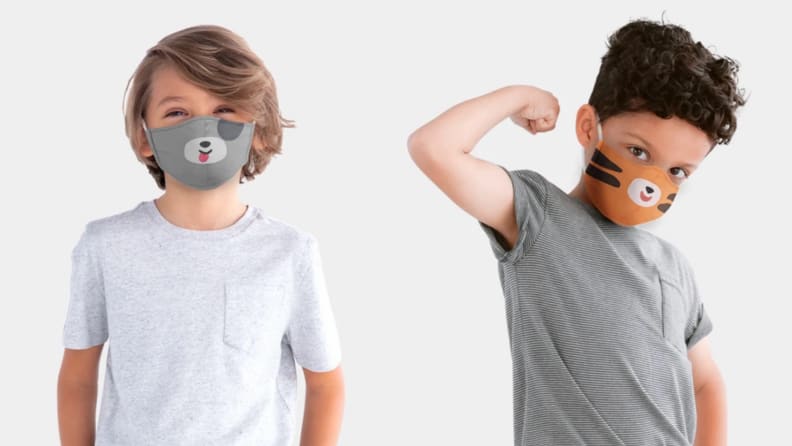
With Cub Coats, your child can match their favorite stuffed animal.
Find a mask that your child will get excited about wearing. These Cub Coats masks are adorable and allow a child to turn into a tiger or bear instantly. Cub Coats are made just for kids and the small size helps younger kids feel comfortable due to their snug fit. As a bonus, add on a matching Cub Coat hoodie that transforms into a stuffy. Because these masks are sold in sets of two, your child can wear one and their stuffy can wear the other.
Get a 2-pack of Cub Coats masks for $4.95
3. Get matching masks
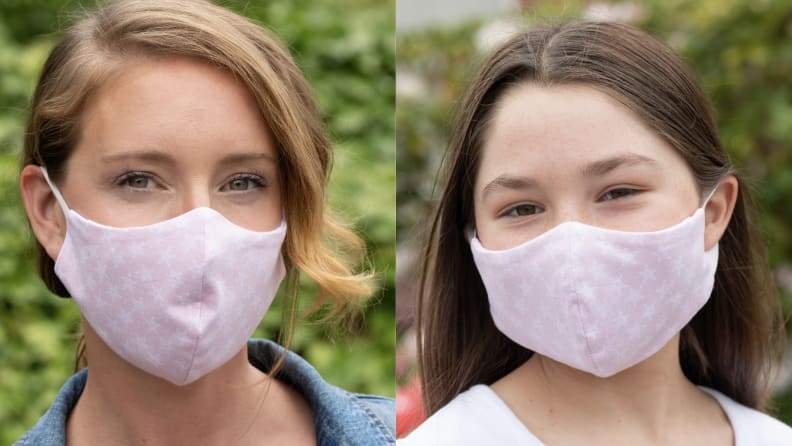
Try mommy-and-me matching masks to get your child more interested in wearing one.
Seeing a parent wear a mask can go a long way toward helping a child accept that they need to wear a mask too. Maybe they will even get excited about wearing the same thing as Mom or Dad and looking like a grown-up. Bogginhead makes all their masks in both kid and adult styles so matching is easy.
These masks are made from the same fabric used to make teether bibs so they are very soft, and they have a pocket for an optional filter. Another feature my kids appreciated was the extra-large ear loops that reduce irritation.
Get a 2-pack of Bogginhead masks for $17.99
4. Make it a set
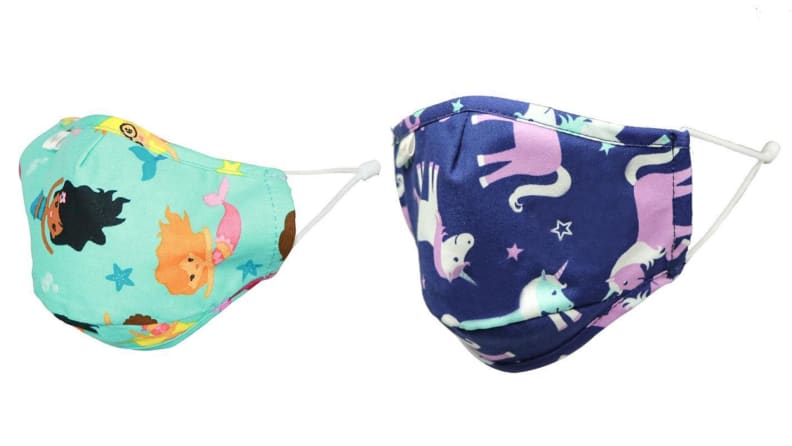
Whether they're more into unicorns or mermaids, kids will love the mask designs from Funkins.
Funkins makes masks to match their adorable line of lunchboxes, which is perfect for back-to-school. You can tell your child that they have a new mask and a new lunch box, and they get to use both. Kid-friendly designs including ladybugs and dinosaurs help make the masks less intimidating and won’t remind your child of being at the doctor’s office.
As a bonus, these masks come in three different configurations, pleated, with a nose wire, and 3-D structured, so you can choose the one that will work best for your child.
Get a Funkins Mask starting at $6 Get a Funkins Lunch Bag starting at $19.95
How to select a mask to accommodate sensory needs
If your child is open to the idea of wearing a mask but finds them uncomfortable—maybe they are too hot in a mask or say it feels too tight—it’s important to seek out one that accommodates their sensory needs. If you know your child’s sensory needs, or they can tell you what about a mask bothers them, you can find a solution and get them a mask that they will actually wear.
1. Look for adjustable straps
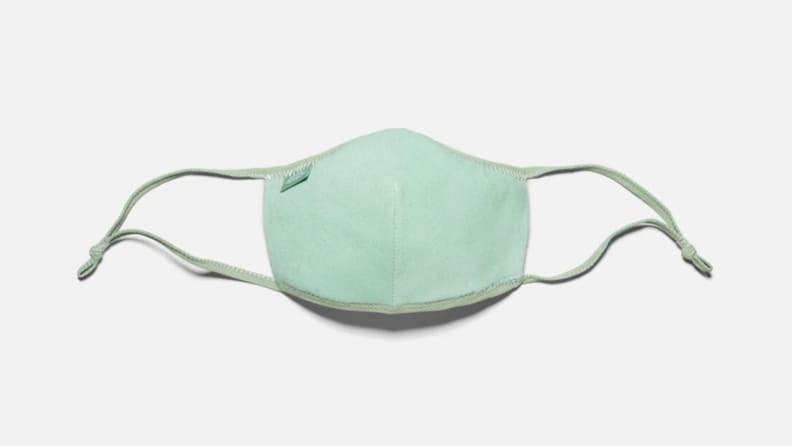
Keen Together masks feature adjustable ear straps for maximum comfort.
Some sensory kids crave the sensory input from a tight-fitting mask. Others prefer masks that are a bit looser. For both types of kids, I found that the Keen Together Mask works well because of its adjustable ear loops. Kids who prefer a snug fit can pull the loops tight, and kids who prefer a looser fit can adjust the loops to a place where they feel comfortable. Kids who prefer a looser fit may gradually learn how to tolerate a more snug fit as they get used to the mask.
The Together mask is also great because it has a layer of cotton canvas that helps the mask retain its shape even through repeated washings. These masks also come in various sizes to help ensure a good fit.
Get a Keen Together Mask for $16
2. Seek out soft fabric
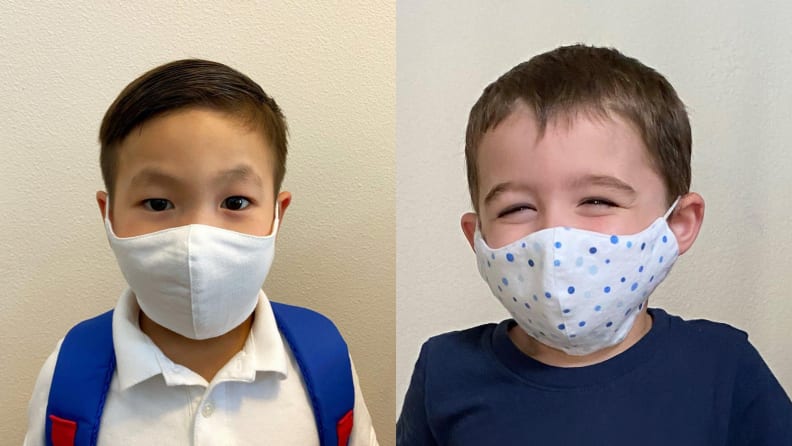
Children will appreciate the ultra-soft cotton fabric of these masks.
Many sensory kids won’t tolerate fabric that is even slightly rough or stiff. Although I haven’t had a baby for a few years, when my kids were babies they loved the soft fabrics from SwaddleDesigns and I suspected they would like SwaddleDesigns masks as well. The soft flannel on these masks did not disappoint. I was a little concerned that the flannel would run a little warm or not be breathable, but it's lightweight enough to not be an issue.
SwaddleDesigns also makes cotton masks that are softer than many of the other masks my family tried, although they are not quite as soft as the flannel versions. These masks come in different sizes to help ensure a good fit. They also have adjustable ear loops and nose bridges so they can be adjusted to help your child feel as comfortable as possible in a mask.
Get a SwaddleDesigns mask starting at $4.99
3. Go thin
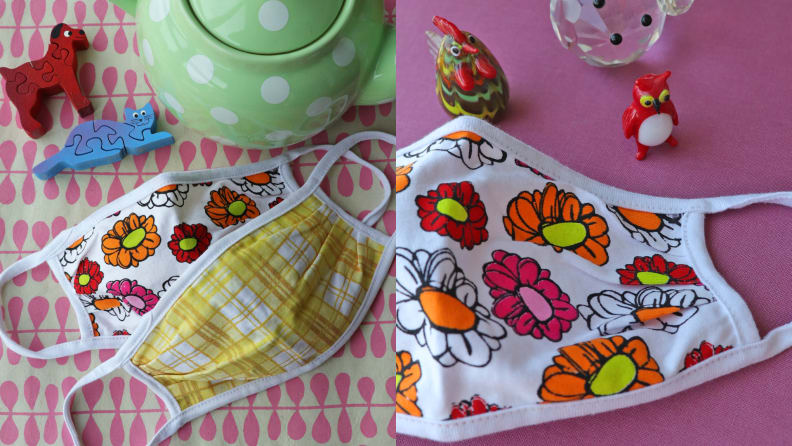
If your child is sensitive to heat, try masks with a thinner fabric.
Giftgowns masks are thinner than most, making them great for kids who are sensitive to the heat. The Giftgowns kids' masks are made of a single cotton layer rather than the multiple layers more common in other masks. This thinner mask will provide some protection for kids who will not tolerate thicker fabrics. All Giftgown masks have ear loops made of fabric rather than elastic so they are also softer on ears than most other masks.
Get a Kids' Mask at Giftgowns starting at $4
4. Look for pleats
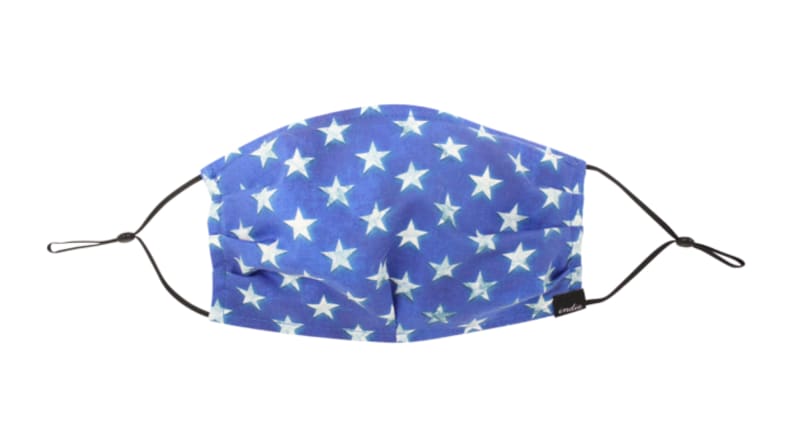
Pleats will help relieve cheeks of extra pressure.
Indie Source masks have a unique design with a flat front and pleats on the sides. This helps the mask fit well over the mouth and nose—the most important areas to keep covered—but there will not be pressure on their cheeks. These masks also have a very thin elastic band that some kids find less irritating, and there's a pocket for an optional filter.
Get an Indie Source mask for $12
Still not working? Try these mask alternatives
For some children with sensory issues, traditional masks just won’t work. That does not mean your child needs to go without. There are some great options that kids with sensory needs may tolerate much better than traditional masks—along with some hacks you can try.
1. Gaiters
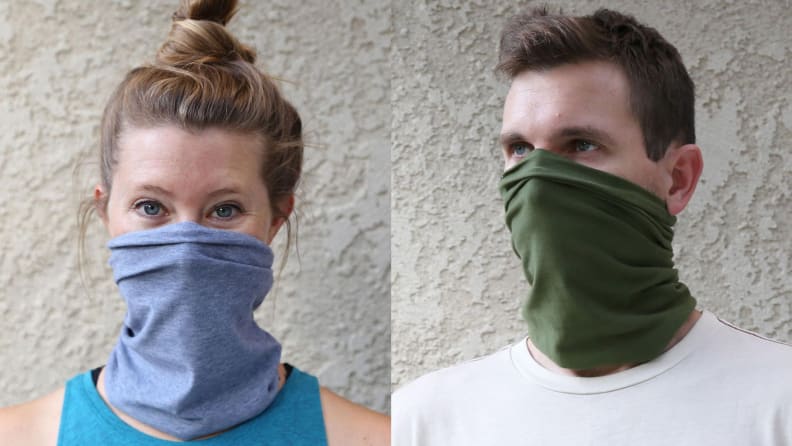
Gaiters may be easier to get used to than over-the-ear masks.
Campers have long enjoyed the benefit of gaiters, which are long pieces of fabric that hang loosely around your neck and can easily be moved up or down. These have the benefit of being highly adjustable because the extra fabric has a lot of give. This is a great option for kids who may have some opportunities to put their mask down and then pull it back up again quickly. Gaiters can also be worn as single or double layer depending on your child’s comfort level or the weather. As an added bonus, since this style goes around your neck when not being worn, it’s nearly impossible to lose. These gaiters from The Daily Supply Company are very soft and have some stretch so they fit most head sizes.
Get a Kids Face Mask Neck Gaiter at Amazon for $8.99
2. A shirt with a built-in face covering
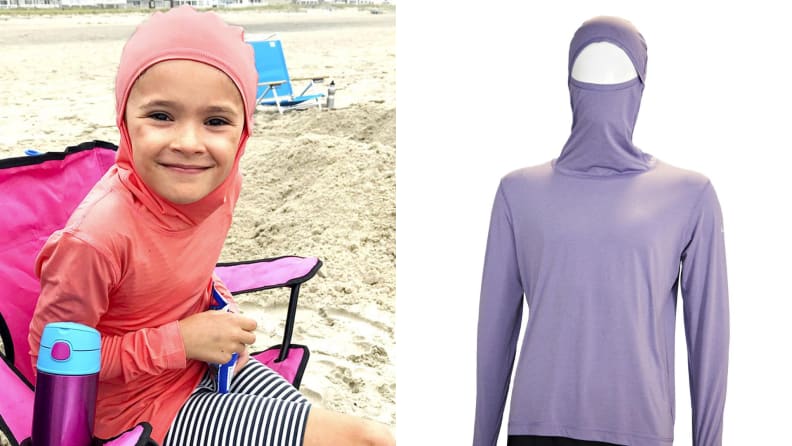
This lightweight shirt may be an alternative for kids who can't stand the feeling of elastic around their ears.
The Liteside shirt from Ushood is designed to provide full coverage in warmer weather and includes a collar that pulls up to cover the face. This lightweight fabric can be worn even during the hottest summer days and feels silky against the skin. This is another great alternative for kids who cannot tolerate elastic, need a face covering that is very soft but don’t like the feel of cotton, or who are reluctant to wear a mask. The Pinnacle is a variation that can be worn in cooler weather on its own or as a base layer under other clothing once fall arrives.
Get a Liteside Shirt at Ushood for $65
3. A hat with a shield
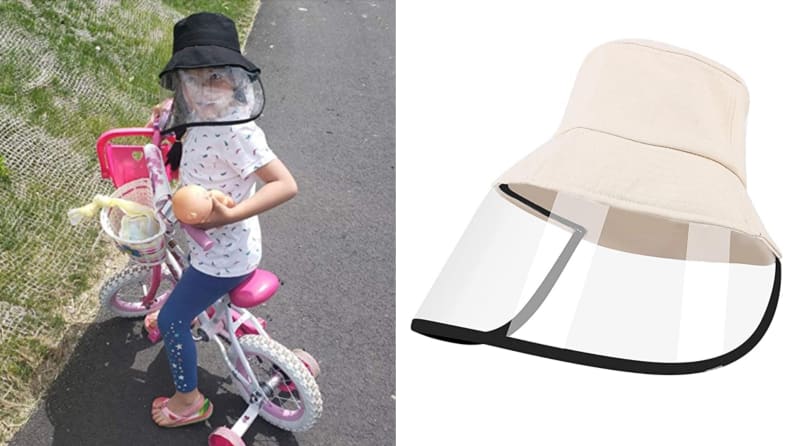
A face shield connected to a hat can keep mask-averse children protected.
Some children who won’t tolerate masks can tolerate a mask with a face shield attached. This hat from July’s Song works for many kids with sensitivities because it does not touch the face and the hat itself is made from soft material. These hats come in a variety of colors so your child can find their favorite.
Get a July's Song Hat with Face Shield on Amazon for $9.99
4. Ear savers
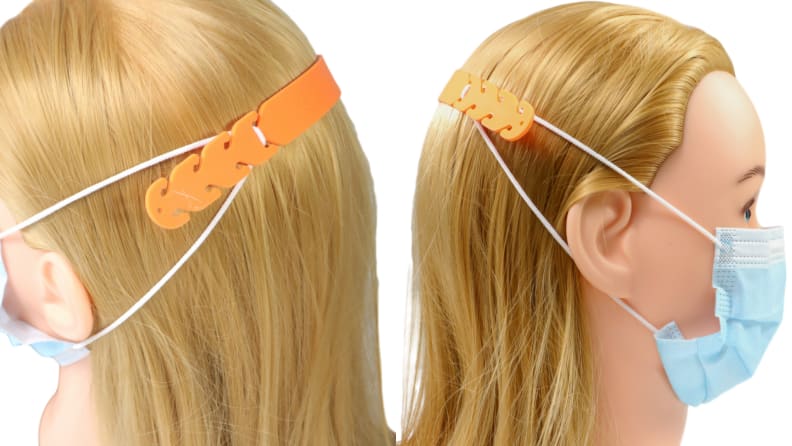
Ear savers can provide a comfortable alternative to any mask you have at home.
Ear savers are a great, inexpensive way to get masks off the ears and help improve the fit of masks your child may otherwise like but don’t quite fit right. There are DIY options like using a ribbon or rope but these won’t wash well and fray easily so they will need to be replaced often. These Pinne Mask Extenders are a great solution to get elastic off of sensitive ears and help get a fit your child will tolerate. These flexible strips also allow your child to move their mask down without loosing it when in a place where it is safe to do so.


